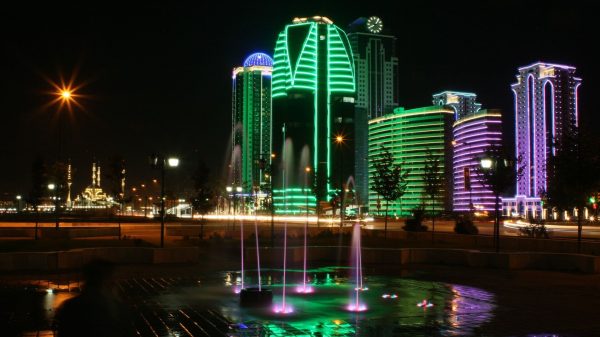Filipino government workers clear a toppled tree in the typhoon-hit town of Tigaon, Camarines Sur, Philippines
Credit: FRANCIS R MALASIG/EPA-EFE/Shutterstock
At least four people were killed as Typhoon Goni pounded the Philippines on Sunday with authorities warning of "catastrophic" conditions in the hardest-hit regions where hundreds of thousands have fled their homes.
The strongest typhoon of the year made landfall on Catanduanes Island before dawn with maximum sustained wind speeds of 225 kilometres (140 miles) per hour and gusts of up to 310 kilometres per hour ripping off roofs, toppling trees and triggering flash floods.
Goni was downgraded from a "super typhoon" as it swept across the southern end of the most populous island Luzon towards the capital Manila, the state weather forecaster said in its latest update.
"Catastrophic violent winds and intense to torrential rainfall" would hammer areas in the typhoon’s path, including provinces near the capital, it warned.
"This a particularly dangerous situation for these areas."
Goni comes a week after Typhoon Molave hit the same region of the natural disaster-prone archipelago and killed 22 people.
At least four people, including a five-year-old, were killed in Albay province, Governor Alfrancis Bichara told a local radio station.
Two of the victims drowned while another was swept away by volcanic mud. The fourth was killed by a falling tree.
"The winds are fierce. We can hear the trees being pummelled. It’s very strong," Francia Mae Borras, 21, told AFP from her home in the coastal city of Legazpi in Albay.
The roofs of two evacuation centres were torn off by the force of the wind and the occupants moved to the ground floors, the provincial public safety chief Cedric Daep told DZBB radio station.
"Flash floods inundated our villages," said Carlos Irwin Baldo, the mayor of Camalig, near Legazpi.
"Our roads have a lot of debris from the mountains such as branches and sand, some of which came from Mayon (volcano). Some roads are unpassable."
Credit: FRANCIS R MALASIG/EPA-EFE/Shutterstock
So far, 346,993 people have been evacuated from their homes, Civil Defence chief Ricardo Jalad said.
In Manila, residents were being evacuated from low-lying slum areas at risk of being inundated by several metres-high storm surges. The city’s airport has been closed as the typhoon approaches.
Loud alarms blared from mobile phones as the National Disaster Risk Reduction and Management Council issued an emergency alert warning of "very destructive to devastating" winds for Manila and surrounding provinces in the coming hours.
Thousands of soldiers and police were on standby to help with evacuations and rescue efforts. Disaster agencies spent Saturday marshalling vehicles, emergency response teams and relief goods before the storm’s arrival.
The weather service has warned of flooding and landslides as Goni dumps heavy rain across the already-soaked region.
Schools which have been empty since the start of the coronavirus pandemic are being used as emergency shelters as are government-run evacuation centres and gymnasiums.
Filipinos take shelter in tents inside a school gymnasium converted into an evacuation centre
Credit: Ezra Acayan/Getty
Covid-19 patients being treated in tent facilities have been evacuated, officials said.
The Philippines has recorded more than 378,000 infections, including over 7,100 deaths, which has stretched its resources and complicated evacuations.
Credit: Ezra Acayan/Getty
Mary Ann Echague, 23, and her family fled their home in Legazpi on Saturday to an inland primary school where they were sheltering in a classroom with several other families.
"We fear the wrath of the typhoon," said Ms Echague, who was with her two children, parents and siblings. They had carried with them a portable stove, tinned meat, instant noodles, coffee, bread, blankets and pillows.
"Each time we’re hit by a typhoon our house gets damaged, since it’s made of wood and galvanised iron roofing."
Nearly 2,000 people have been left stranded after the coastguard ordered ferries and fishing boats into port in expectation of rough seas throwing up 16-metre waves.
Goni is expected to "slightly weaken" as it crosses southern Luzon and enters the South China Sea late on Sunday or early Monday as a typhoon, the state forecaster said.
But another tropical storm is already brewing off the coast and is expected to intensify as it nears the country in the coming days.
The Philippines is hit by an average of 20 storms and typhoons every year, which typically wipe out harvests, homes and infrastructure, keeping millions of people perennially poor.
Its deadliest on record was Super Typhoon Haiyan, which unleashed giant waves on the central city of Tacloban and left more than 7,300 people dead or missing in 2013.





















































Свежие комментарии